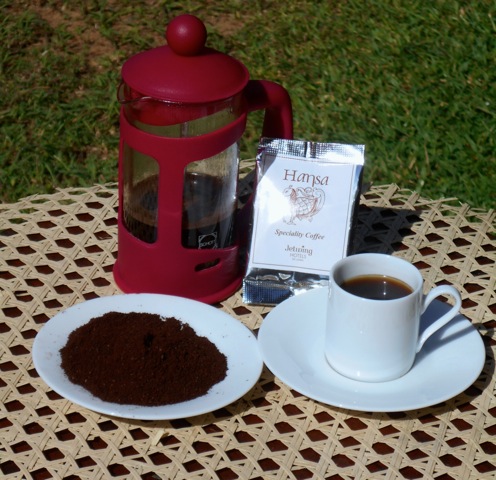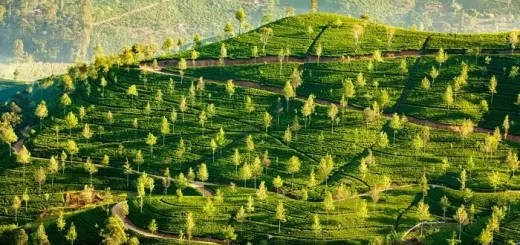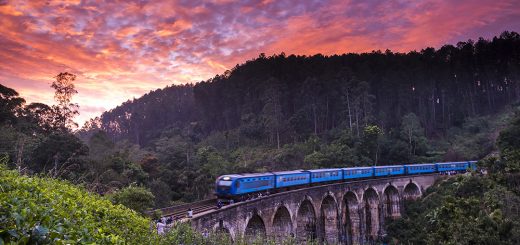SRI LANKA ROUNDABOUT (Number 26) – Coffee
by · Published · Updated
A weekly look at Sri Lanka for Jetwing by Royston Ellis
Welcome to Jetwingers around the world to this week’s issue of my regular Jetwing newsletter about Sri Lanka
Pure Ceylon Coffee?
Sri Lanka has long been famous for Pure Ceylon Tea but tea has only been grown in the country for 148 years. Before that coffee was king.
I discovered recently that instead of the usual sachet of instant coffee that hotels provide for guests to make their own quick coffee fix in their bedrooms, in some Jetwing hotel bedrooms, there is a chance to brew and drink coffee grown in Sri Lanka. That’s how I was introduced to Hansa Speciality Coffee.
Beside the kettle and cups on a tray in my Jetwing hotel bedroom, there was a small “French Press” – the jug with a plunger that makes brewing coffee very easy. There were instructions on how to use it printed on the side of the air-sealed foil pouch containing coffee grounds.
I was intrigued to read on the label: “The coffee you are drinking will encourage farmers in Sri Lanka to look after and enrich the biodiversity of plants and creatures in their forest gardens. Hansa Coffee strives towards a fair trade relation with these small scale coffee growers.”
No one knows when coffee first came to Sri Lanka. Sir James Emerson Tennent writing in his 1859 book, Ceylon stated: “As to coffee, although the plant had existed from time immemorial on the island (having probably been introduced from Mocha by the Arabs), the natives were ignorant of the value of its berries, and only used its leaves to flavour their curries, and its flowers to decorate their temples.”
It was not until nearly a century after the arrival of the Dutch that one of their Governors attempted to cultivate it as a commercial speculation.Governor Schreuder (1757-62) reported: “Coffee succeeded very well in the western parts of the island. It was superior in quality to the coffee of Java, and approached near to that of Arabia, whence the first coffee plants came.”
It was only after the British arrived in 1796 and eventually conquered the highland interior and expanded the natural coffee gardens there that coffee became the first hugely successful export crop from Sri Lanka.
As the demand for Ceylon coffee around the world increased, highland forests were cleared and67,453,680 pounds of coffee were exported in 1857. By 1867 there were 162,700 acres under coffee cultivation. That is a crucial year because by then a devastating fungus was spreading through the coffee gardens, and it was then that a Scotsman, James Taylor, in a field cleared for planting coffee, decided to plant tea seedlings instead.
His foresight saved the country’s plantation industry. While many planters were ruined as coffee bushes succumbed to the creeping blight, others followed Taylor’s lead and took to growing tea (not susceptible to blight) and established Ceylon as the source of the world’s best tea.
The world, and this country’s planters, forgot about Ceylon coffee for nearly 150 years. The Hansa group with support from the Netherlands government through the Integrated Rural Development Project,has revived growing coffee and roasting on site near the hill station of NuwaraEliya. This coffee, produced from Arabica and Robusta coffee beans, yields a smooth, chocolaty brew with a rich taste. As I discovered when I made a pot myself in my bed room, it’s worth trying during a stay at a Jetwing Hotel.
Royston Ellis (http://www.roystonellis.com) is a British author resident in Sri Lanka since 1980.





